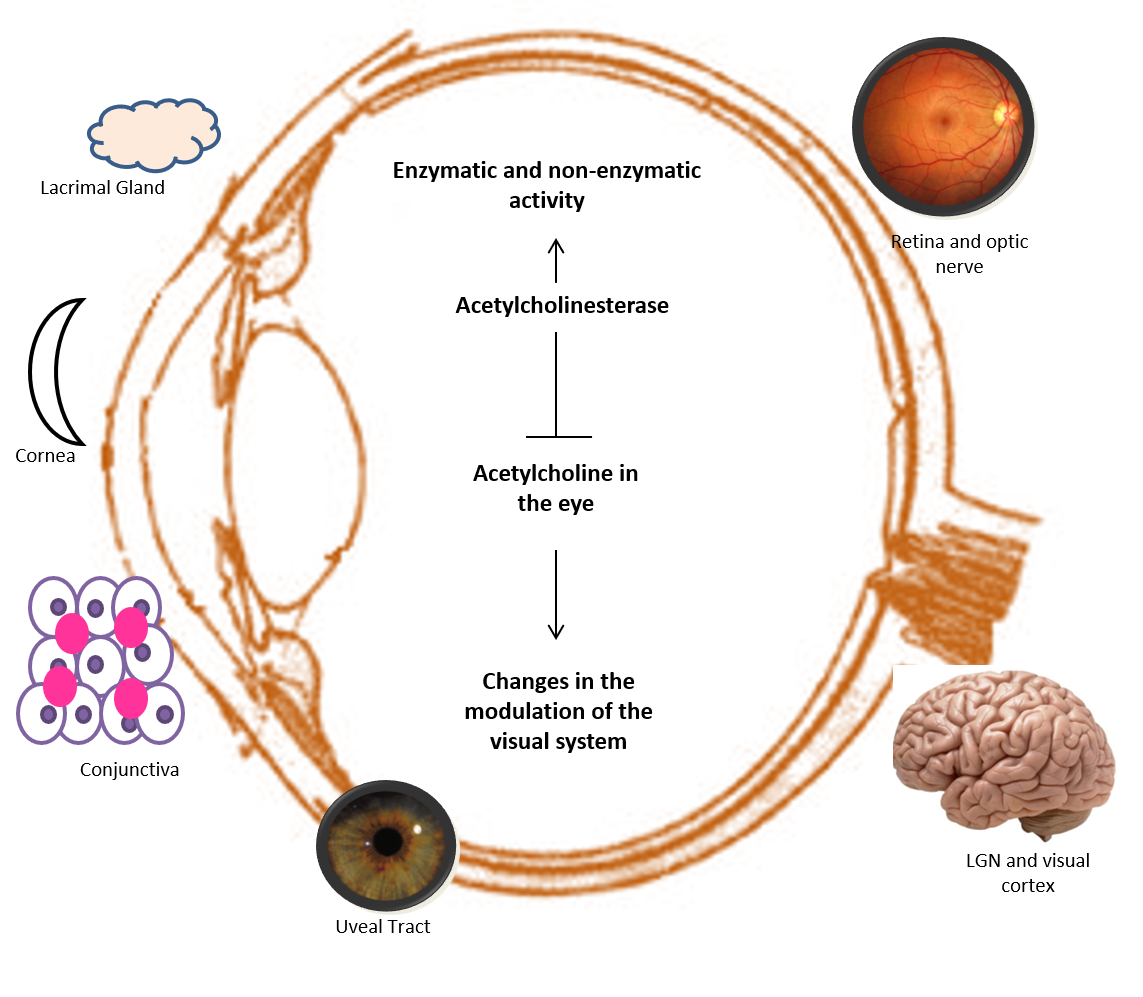Review
Version 1
Preserved in Portico This version is not peer-reviewed
Cholinesterase Activity in the Eye?
Version 1
: Received: 22 June 2021 / Approved: 22 June 2021 / Online: 22 June 2021 (14:28:38 CEST)
How to cite: Durán Cristiano, S.C. Cholinesterase Activity in the Eye?. Preprints 2021, 2021060549. https://doi.org/10.20944/preprints202106.0549.v1 Durán Cristiano, S.C. Cholinesterase Activity in the Eye?. Preprints 2021, 2021060549. https://doi.org/10.20944/preprints202106.0549.v1
Abstract
The visual system is regulated by the nervous through neurotransmitters, which play an important role in visual and ocular functions. One of those neurotransmitters is acetylcholine, a key molecule that plays a diversity of biological functions. On the other hand, acetylcholinesterase, the enzyme responsible for the hydrolysis of acetylcholine, is implicated in cholinergic function. However, several studies showed that in addition to their enzymatic functions, Acetylcholinesterase exerts non-catalytic functions. In recent years, the importance of evaluating all possible functions of acetylcholine-acetylcholinesterase has been evidenced. Nevertheless, there is evidence that suggests cholinesterase activity in the eye can regulate some biological events both in structures of the anterior and posterior segment of the eye and therefore in the visual information that is processed in the visual cortex. Hence, the evaluation of cholinesterase activity could be a possible marker of alterations in cholinergic activity not only in ocular disease but also in systemic diseases.
Keywords
cholinesterase; acetylcholine; visual function; ocular surface; retina
Subject
Medicine and Pharmacology, Immunology and Allergy
Copyright: This is an open access article distributed under the Creative Commons Attribution License which permits unrestricted use, distribution, and reproduction in any medium, provided the original work is properly cited.
Comments (0)
We encourage comments and feedback from a broad range of readers. See criteria for comments and our Diversity statement.
Leave a public commentSend a private comment to the author(s)
* All users must log in before leaving a comment









